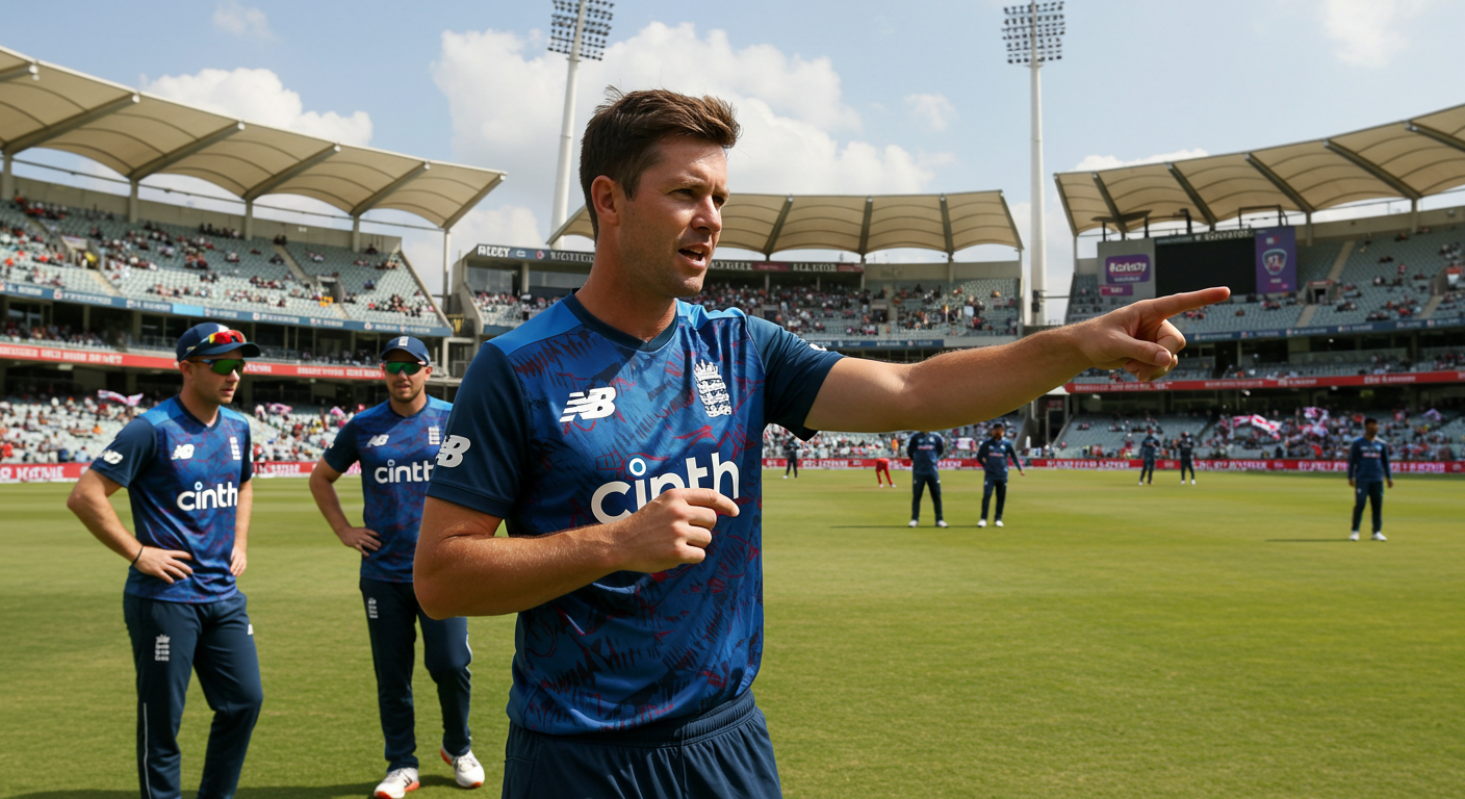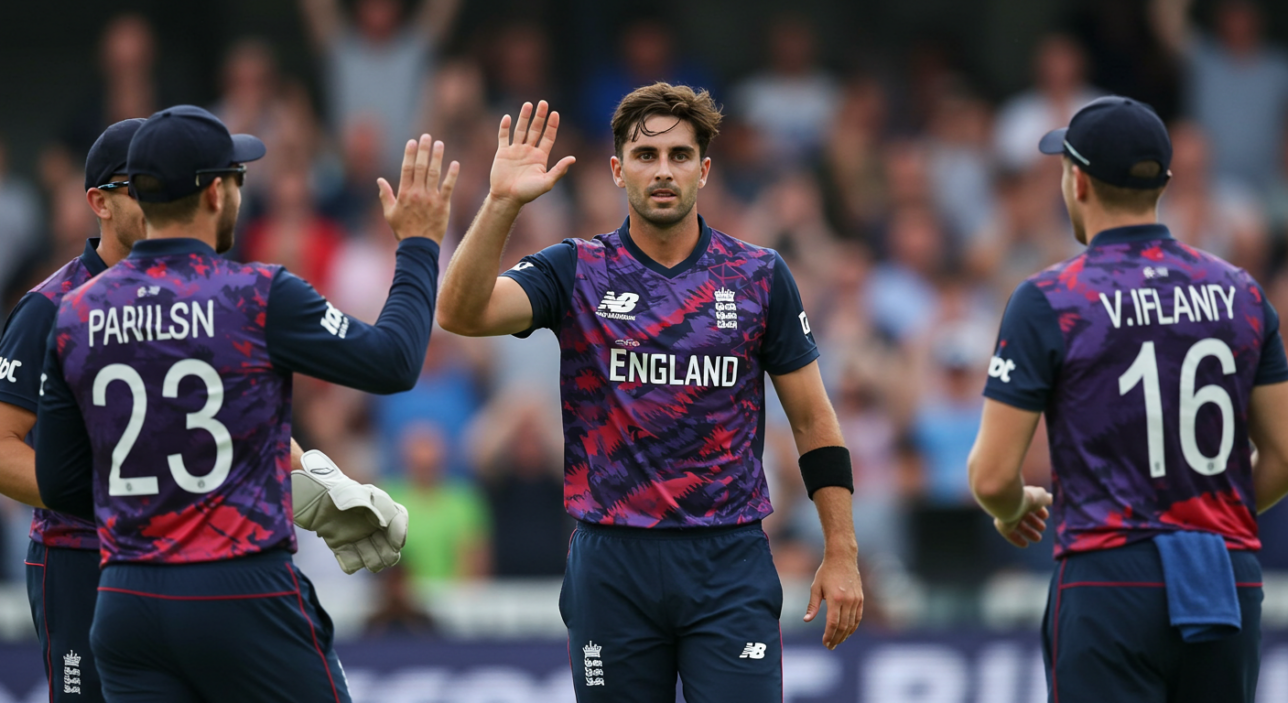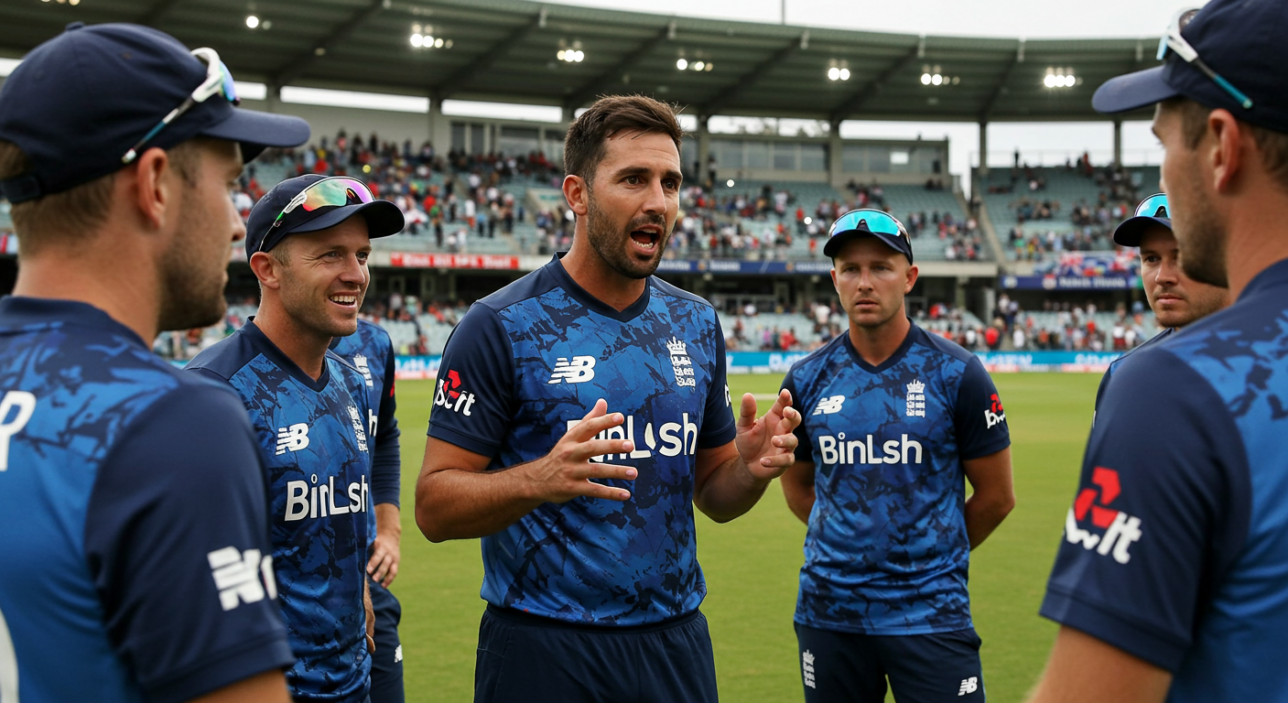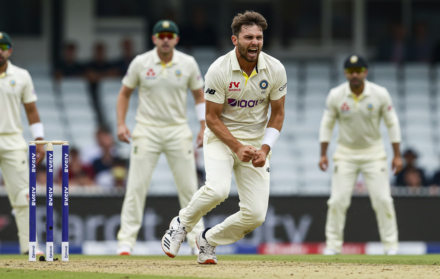
T20 Captaincy: What Makes a Great Short-Format Leader?
Leading a T20 side is one of the most demanding roles in modern sport. The margins for error are razor-thin, momentum can swing in a single over, and decisions that might unfold over a day in Test cricket must happen in seconds here. In this format, tactical sharpness, emotional control, and intuition are not luxuries — they are necessities.
Great captains in longer formats often rely on patience and the ability to grind down opponents. T20 captaincy requires something else: clarity under chaos. It’s about reading games at lightning speed, making bold, instinctive calls, and knowing when to back a player — or when to change the plan without hesitation.
Successful leaders in this format — from MS Dhoni to Eoin Morgan — have shown that it’s not just about tactics either. It’s about man-management, setting the right tone, and harnessing individual brilliance within a team-first structure.
In this article, we’ll unpack the qualities, skills, and strategies that define truly great short-format leaders. From field placements to psychological warfare, we’ll explore how T20 captaincy demands a different breed of cricketing brain — and why mastering it can transform a good team into champions.
1. Quick Decision-Making Under Extreme Pressure

In T20 cricket, hesitation is fatal. A captain doesn’t have five overs to ponder a bowling change or mull over a field adjustment. Every moment counts, and decisions must be made almost instinctively. The ability to assess the situation and act within seconds often separates good captains from exceptional ones.
Sometimes it’s obvious — a bowler struggling must be replaced immediately. But more often, decisions are made with incomplete information: an unpredictable pitch, a batter who’s just beginning to find rhythm, or a change in light conditions. In those moments, gut feel, sharpened by preparation, makes all the difference.
Great T20 captains trust their instincts but base them on deep experience. They notice small shifts — a batter’s hand position, a bowler’s length getting fractionally fuller — and adjust instantly. They’re willing to gamble because they understand that doing nothing is often the bigger risk.
When looking at successful T20 captaincy, you consistently find leaders who don’t second-guess themselves under pressure. The scoreboard might be flying, the crowd roaring, but the great captains stay decisive — and give their teams clarity even in the middle of chaos.
2. Mastering Field Placements for Maximum Impact
Setting a field in T20 cricket is a fine art. With only two fielders allowed outside the circle during the powerplay and five thereafter, every position must serve a specific purpose. There’s no room for vanity fields or defensive setups that merely look good on paper. It’s about balancing risk, rewarding strong areas, and forcing mistakes.
Great captains in the short format are proactive, not reactive. They tweak fields ball by ball based on a batter’s movements, preferred zones, and previous shot selection. A midwicket moves square after a mistimed flick. A deep third man shifts finer after a late cut. These subtle adjustments often make the difference between a two and a wicket.
Reading the batter’s intent and responding instantly is what elevates field placements from basic to brilliant. Some captains even use fields to bait batters into false shots — leaving a tempting gap only to set a trap with a slower ball or a wide line.
Effective T20 captaincy demands a dynamic, evolving understanding of how to control space. It’s not just about where the fielders stand — it’s about where you make the batters believe they can score, and then shutting that door before they realise.
3. Bowling Rotations: Squeezing Overs, Squeezing Minds
Managing bowlers across just 20 overs isn’t about preservation — it’s about pressure. T20 captaincy requires using bowlers at exactly the right moment, not just when their four-over quota needs ticking off. The best captains squeeze overs from their best weapons while always thinking two overs ahead.
Match-ups matter. A captain must know which spinner can tie down a right-hander, or which seamer’s slower ball will trouble a left-hander slogging to the short boundary. It’s also about reading game flow: sensing when a double change is needed to disrupt a building partnership, or when to ride the momentum of a bowler who’s just taken a wicket.
Rotation isn’t just about variety either. Over-bowling a spinner if the pitch is turning or keeping your express pacer on for an extra over if the batter looks unsettled are aggressive moves that can tilt matches.
One of the smartest aspects of T20 captaincy is recognising that overs are currency — and great captains spend theirs at the right time, with the right bowler, targeting the right batter. It’s a chess match where the wrong move isn’t corrected in days — it’s punished in minutes.
4. Empowering Matchwinners Without Micromanaging

T20 teams are filled with players capable of changing games in a few balls. Great captains know when to direct — and when to get out of the way. Micromanaging every ball can suffocate natural instincts. At the same time, leaving players without guidance can create chaos.
Finding that balance is crucial. Leaders like MS Dhoni and Eoin Morgan became known for their calmness because they trusted their matchwinners. A bowler like Dwayne Bravo might set his own field mid-over. A finisher like Andre Russell would be given a clear licence to attack, not detailed instructions about shot selection.
Giving players responsibility builds confidence. It also fosters accountability: when a player feels trusted, they’re more likely to step up when the moment demands. But captains still need to provide frameworks — clear expectations about which end to attack from, which batters to target, or which fielders to protect.
One of the most overlooked aspects of successful T20 captaincy is emotional intelligence. It’s about knowing your squad — understanding when to guide, when to push, and when to simply back your players’ instincts. Short formats don’t allow time for rebuilding confidence mid-innings. Trust must be built beforehand.
5. Reading Momentum Swings Instantly
Momentum in T20 cricket doesn’t shift gradually — it snaps. A six off the last ball of an over, a dropped catch, or two quick wickets can turn the entire complexion of a match. Recognising these shifts in real time, rather than after the damage is done, is what separates instinctive captains from reactive ones.
The best short-format leaders sense when a batting side is about to break loose or when a bowler needs protection. They adjust fields quickly, change angles of attack, and often get ahead of the opposition’s next move. Momentum isn’t just about scoring runs — it’s about energy, body language, and belief.
An astute captain also knows how to engineer momentum swings. A surprise bowling change, an attacking field after a boundary, or even a loud encouragement between deliveries can tilt the mental game back in their team’s favour.
Understanding and managing these unseen dynamics is central to effective T20 captaincy. A captain who rides momentum instead of challenging it often watches games slip away in a matter of overs. Those who take control, however, dictate the chaos rather than surviving it.
6. Staying Flexible Without Losing the Core Plan
Good T20 captains start with a plan; great ones adapt when reality doesn’t cooperate. Whether it’s unexpected dew, a batter attacking a supposed weak link, or a flat wicket offering nothing to bowlers, flexibility is crucial. Yet there’s a fine line between smart adjustments and abandoning the overall strategy.
The best leaders stick to their team’s strengths even when conditions shift. If the plan was to attack with spin, they don’t panic after a few boundaries — they tweak angles, vary pace, or shift fields without losing the overall intent. The goal is always the same: control the tempo and force mistakes.
Rigidity is dangerous in T20s, but so is chasing the game too hard. Bowing to pressure can fragment a team’s purpose, with bowlers confused and fielders tentative. Balance is everything.
Strong T20 captaincy thrives on flexible execution rooted in a clear overarching vision. It’s knowing that while plans will bend, principles must stay firm. Great captains don’t just survive surprises — they turn them into opportunities.
7. Managing Over Rates and Game Tempo

Over rates might seem like an administrative detail, but in T20 cricket, they’re integral to a captain’s management of the match. Slowing the game down strategically or hustling through overs at the right time can unsettle opponents and maintain control. Conversely, a lagging over rate can trigger penalties, fines, or even fielding restrictions.
Captains must be time managers as much as tacticians. When a partnership is building, dragging time between balls — within the laws — can disrupt a batter’s flow. When their side is on top, rattling through overs can suffocate the opposition and increase scoreboard pressure.
Field setting efficiency is a part of this. Barking orders after every ball not only wastes time but signals uncertainty. Great captains set clear fields early and empower bowlers to adjust subtly without drama.
T20 captaincy is often judged by bowling changes and fielding moves, but the ability to control the rhythm of the match through over rates and tempo is a hidden but powerful weapon. It’s a reflection of organisation, authority, and an acute understanding of how tiny advantages compound over 120 deliveries.
8. Handling Star Players and Big Egos
T20 teams are often packed with personalities — high-profile players who are used to being matchwinners elsewhere. Managing these individuals without creating resentment or division is one of the toughest jobs for a captain. It’s not just about authority; it’s about building trust and understanding when to intervene and when to let stars thrive.
A strong captain recognises that not every player needs the same style of leadership. Some respond to firm instructions, others need autonomy. Balancing individual freedom with team discipline is delicate but critical. Publicly backing star players during rough patches while setting clear internal standards often wins respect without ceding control.
Squad rotations, batting orders, and bowling plans need sensitive handling when big reputations are involved. Dropping a star bowler from a pressure over or asking a top batter to adapt to a new role must be done with clarity and empathy.
T20 captaincy, at its highest level, is about blending talent into a team without sacrificing unity. Managing ego without ego is a rare trait — and leaders who master it often build the strongest, most resilient squads.
9. Keeping Calm When the Game Speeds Up
T20 cricket has a way of accelerating to a pace that feels almost uncontrollable. A flurry of sixes, a chaotic over with wides and no-balls, or an unexpected collapse can leave even seasoned teams rattled. In these moments, the captain’s demeanour matters as much as their tactical nous.
The very best captains project calm — not because they are unaffected, but because they understand their visible reactions affect the players around them. A panicked captain transfers tension onto the field; a composed one reassures their side that recovery is possible.
Calmness also aids decision-making. Choices made under duress — changing a bowler too soon, crowding the field in desperation — often lead to further mistakes. Staying patient, trusting processes, and focusing on executing plans rather than reacting emotionally allows a team to weather storms that would undo less organised sides.
T20 captaincy isn’t about eliminating chaos; it’s about absorbing it without losing control. Composure under fire, in many cases, becomes the difference between glorious wins and heartbreaking losses.
Conclusion: Why T20 Captaincy Demands a New Breed of Leader

The demands of T20 captaincy are unlike anything else in cricket. Decisions are condensed into seconds, pressure is amplified by every ball, and leadership is constantly tested by unpredictable twists. In this frenetic environment, traditional virtues like patience and cautiousness must be blended with speed, instinct, and emotional intelligence.
Successful T20 captains aren’t just tacticians — they’re game managers, man-managers, and energy managers. They have to juggle strategies for different phases, handle a mix of rising stars and established names, and keep their teams mentally agile across high-intensity contests. A calm head, a bold heart, and a flexible mind form the essential trio for short-format leadership.
What defines great T20 captaincy is not the avoidance of mistakes — it’s the ability to recover from them instantly. It’s about creating a side that believes, adapts, and performs under the most extreme conditions. As the format continues to evolve, so too must its leaders — quicker thinkers, better communicators, and masters of controlled chaos. Those who adapt fastest will not just survive but shape the very future of T20 cricket.





